python进阶训练
Posted
tags:
篇首语:本文由小常识网(cha138.com)小编为大家整理,主要介绍了python进阶训练相关的知识,希望对你有一定的参考价值。
1、列表,字典,集合解析
from random import randint
#列表解析,选出大于0的元素
data=[randint(-10,10)for i in range(10)]
result1=filter(lambda x:x>=0 ,data)
result2=[x for x in data if x>=0]#最快
for x in data:#最慢
if x>=0:
print(x)
#字典解析,value大于80
d = {x:randint(60,100) for x in (1,20)}#构造字典
result3={k:v for k,v in d.items() if v>80}
print(result3)
#集合解析
#集合中科院被3整除的元素
s=set(data)
result4={x for x in s if x%3 ==0}
2、为元组命名
#可命名元组 from collections import namedtuple #第一种方式 student = (‘BOB‘,16,‘male‘,‘[email protected]‘) name,age,sex,email = range(4) print(student[name])
from collections import namedtuple #第一种方式 # student = (‘BOB‘,16,‘male‘,‘[email protected]‘) # name,age,sex,email = range(4) # print(student[name]) student= namedtuple(‘student‘,[‘name‘,‘age‘,‘sex‘,‘email‘]) s=student(‘jim‘,16,‘male‘,‘[email protected]‘) print(s,‘==========‘,s.name)
执行结果如图

3、统计序列中元素出现频度
from random import randint
data = [randint(1,20) for x in range(50)]#随机序列,计算每个元素出现的次数
c=dict.fromkeys(data,0)#0是初始值,将;将列表中的元素作为字典的key
for x in data:
c[x] +=1
from random import randint data = [randint(1,20) for x in range(50)]#随机序列,计算每个元素出现的次数 from collections import Counter c2 = Counter(data) c2.most_common(3)#哪三个元素出现最多 print(c2,c2.most_common(3))
结果如图

词频统计
import re from collections import Counter txt = open(‘a.txt‘).read() c1=re.split(‘\\w‘,txt)#对非字母进行分割,然后传进Counter result = Counter(c1)#将列表传进去 res = result.most_common(3)#出现次数最多的三个单词
4、根据字典中值的大小,对字典中的项进行排序
from random import randint
d1={x: randint(60,100) for x in ‘abcxyz‘}#六个人分别叫abcxyz
#1
print(sorted(zip(d1.values(),d1.keys())))#元组组成的列表,比较元组的第一个元素
#2
print(sorted(d1.items(),key=lambda x :x[1]))
结果如图

5、如何快速找到多个字典里面的公共键
from random import randint,sample
#sample是取样
#1
sam=sample(‘abcdef‘,randint(3,6))#随机选取‘abcdef‘三到6个样本
s1 ={x:randint(1,4) for x in sample(‘abcdef‘,randint(3,6))}
s2={x:randint(1,4) for x in sample(‘abcdef‘,randint(3,6))}
s3={x:randint(1,4) for x in sample(‘abcdef‘,randint(3,6))}
print(s1,s2,s3)
for k in s1:
if k in s2 and k in s3:
print(k)
结果如图

第二种方法
print(s1.keys() & s2.keys() & s3.keys())#python2是viewkeys,这里取交集 from functools import reduce print(reduce(lambda a,b:a & b,map(dict.keys,[s1,s2,s3])))#如果键多可以这样,python2是viewkeys
6,、如何让字典有序
from collections import OrderedDict
d= OrderedDict()
d[‘jib‘]=(1,35)
d[‘bob‘]=(2,5)
d[‘bbc‘]=(3,5)
for i in d:
print(i)
结果如图
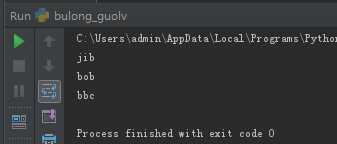
7、拆分含有多个分隔符的字符串
s=‘ab;cd|efgh|hi,jkl|topq;rst,vww\\atex‘ t=[] res = s.split(‘;‘) map(lambda x: t.extend(x.split(‘|‘)),res) print(t)
第二种方法
import re s=‘ab;cd|efgh|hi,jkl|topq;rst,vww\\atex‘ print(re.split(r‘[,;\\|]‘,s))
结果如图
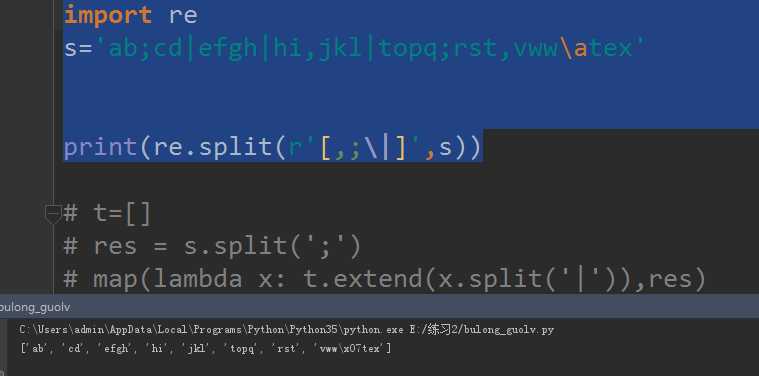
8、判断字符串开头
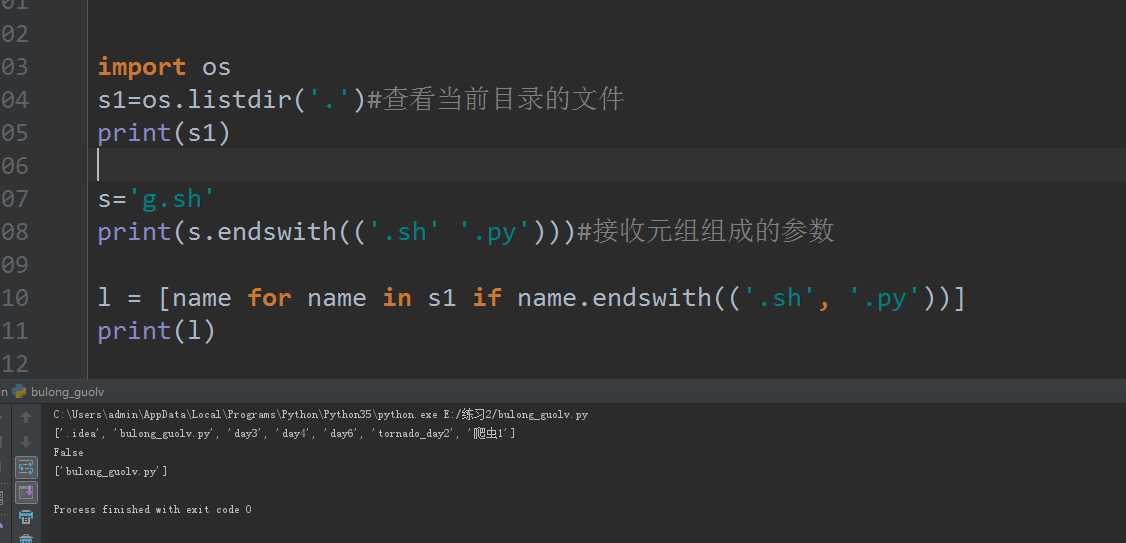
9、正则调整文本格式
import re
#1
l=[‘2016-05-23‘,‘2016-06-11‘,‘2016-07-12‘]
l1=‘2016-05-23‘
print(re.sub(‘(\\d{4})-(\\d{2})-(\\d{2})‘,r‘\\2/\\3/\\1‘,l1))
结果如图
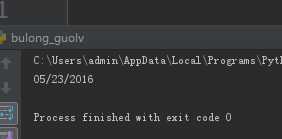
第二种方法
import re
#1
l=[‘2016-05-23‘,‘2016-06-11‘,‘2016-07-12‘]
l1=‘2016-05-23‘
print(re.sub(‘(?P<year>\\d{4})-(?P<month>\\d{2})-(?P<day>\\d{2})‘,r‘\\g<month>/\\g<day>/\\g<year>‘,l1))
10、字符串拼接
第一种方法
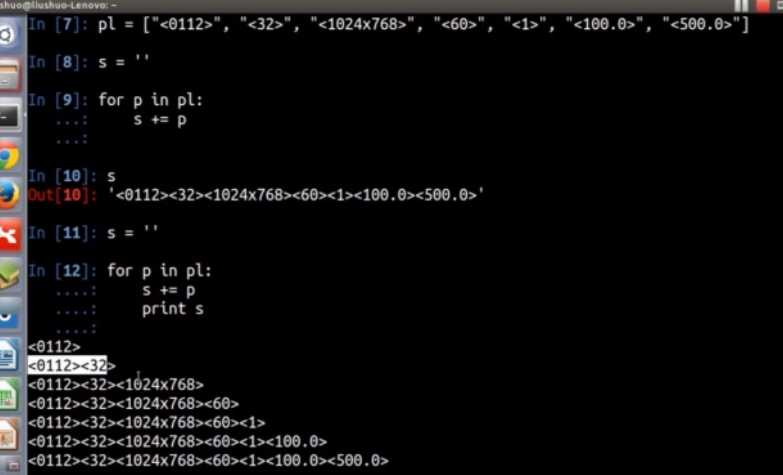
不过这种方法浪费内存,下面是第二种方法,用join
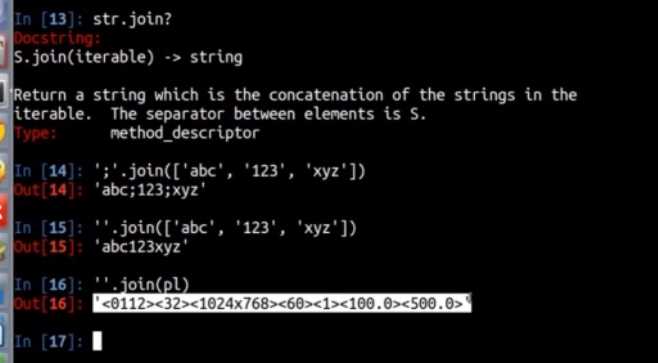
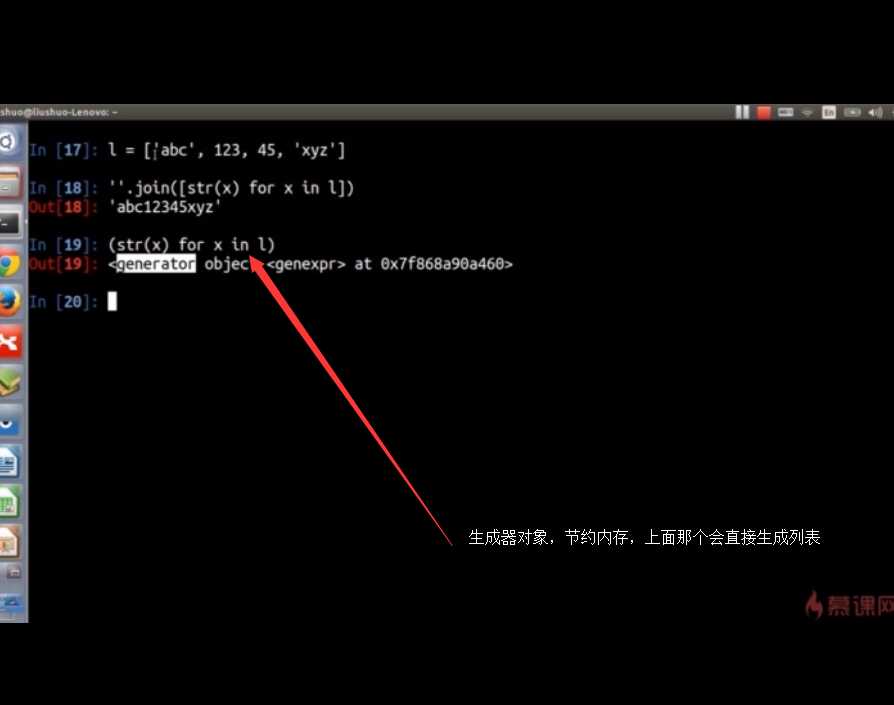
11、调节字符串居中,左右对齐
s= ‘abc‘ print(s.ljust(20)) print(s.ljust(20,‘+‘)) print(s.center(20,‘+‘))
结果如图
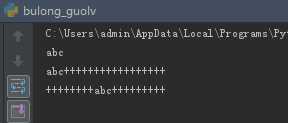
ling另外一种方法如图
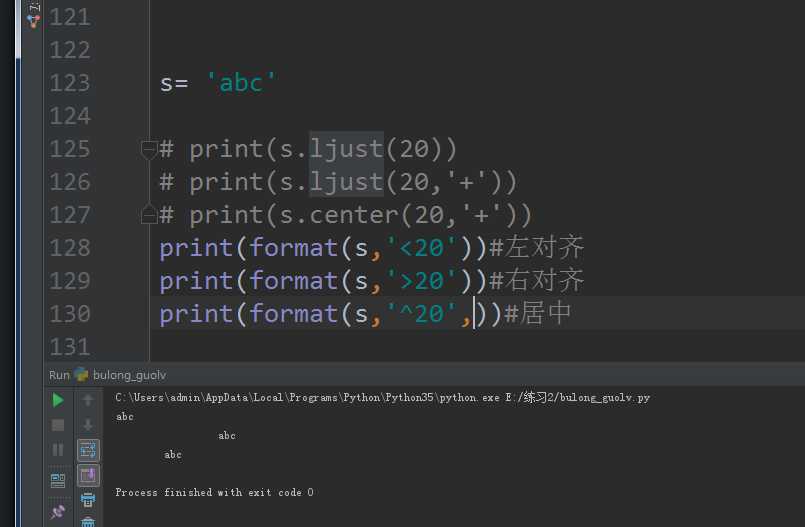
12、去掉不需要的字符串
去除空格
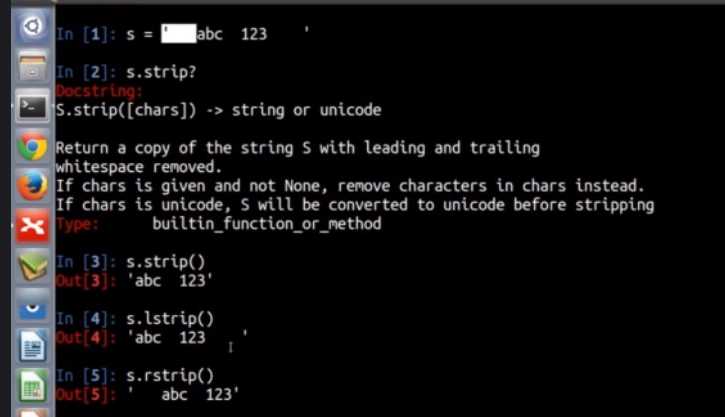
去除指定字符
s= ‘abc__++++‘ print(s.strip(‘_+‘)) s1 = ‘abc:1224‘ print(s1[:3]+s1[4:])
结果如图
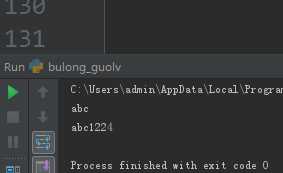
s= ‘\\tadhi\\sfds\\sdfds\\sdfds\\gf\\gs\\ggg‘ print(re.sub(‘[\\t\\g\\f\\d]‘,‘‘,s))
以上是关于python进阶训练的主要内容,如果未能解决你的问题,请参考以下文章